For the second Watch Affinity Spotlight feature, we thought we would take a look not at a particular brand, but more at a particular family of watches – the Blancpain Fifty Fathoms, the original and first modern, purpose-built diving watch. We will explore the history of the collection and take a look at some of the highlights along the way.
Blancpain Fifty Fathoms: The Story
It would prove a nigh impossible task to attempt to summarise the entire story of the Fifty Fathoms in one article, after all it has been around since 1953 with a brief hiatus between 1980 and 1997 (more on that later), and there are quite literally entire books dedicated to telling this story (I recommend “Fifty Fathoms: The Dive and Watch History 1953-2013”, affiliate link).
However, with this article we aim to go a little deeper than a mere scratch of the surface and highlighting some of the more interesting and key points through the history – at least in our eyes, and hopefully yours, too!
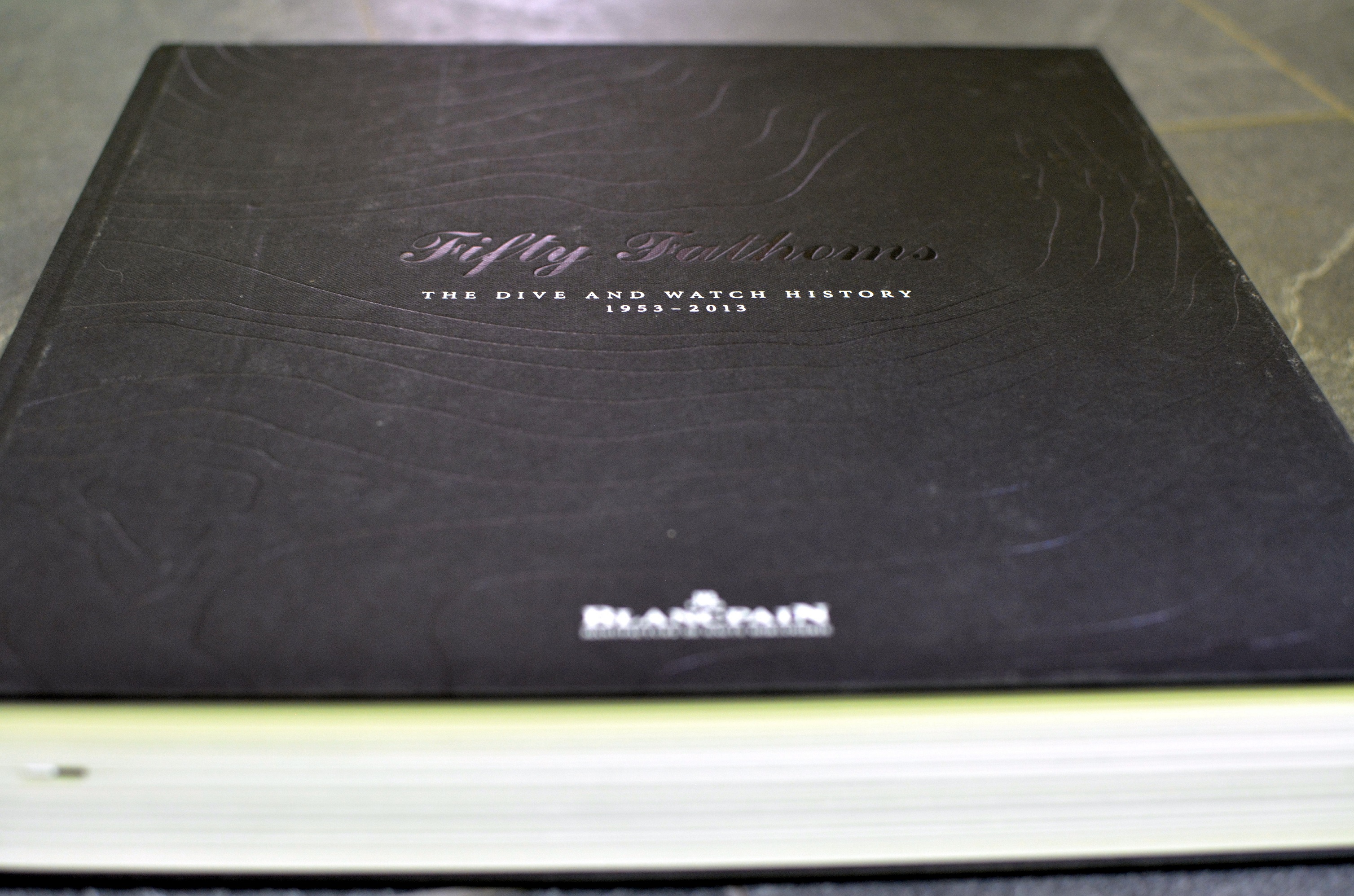
Fifty Fathoms: The Dive and Watch History 1953-2013
Fifty Fathoms – the 1953-1980 Era
The story begins within the military, more specifically the frogmen – special forces operatives around the world who specialise in deep water missions. As you can well imagine, these individuals endured the toughest of environments, in often freezing cold sea-water, and up to depths of close to 100 metres (or 300 feet) underwater which was the limit that diving technology could support at the time. Despite being supplied with equipment just as hardy as they were themselves, one crucial piece of kit remained continually elusive to the frogmen – an accurate, reliable timepiece that could keep pace with them and work at even 100 metres depth.
It fell to Captain Robert Maloubier and Lieutenant Claude Riffaud of the French frogmen unit, one of the world’s oldest and most renowned such units, having been formed in 1952. In their quest to find a timepiece they could rely upon, they took their exacting standards to Jean-Jacques Fiechter, the CEO of Blancpain. Fortunately for them, Fiechter himself was an avid diver and so took on the challenge.
This timepiece would need to meet the stringent needs of the French unit, including: a black dial, large in size, legible numerals and markings, a rotating bezel to align with the minute hand for calculating the remaining oxygen, and of course – water resistance. It is an interesting point of note that many of these requirements, met by the Fifty Fathoms in 1953, today form the basis of the ISO 6425 standard for diving watches!
In 1953, Blancpain and Jean-Jacques Fiechter produced what would go on to become legendary – the world’s first purpose-designed diving watch. Much larger than other watches of this era, the 42mm timepiece was designed to be water resistant to the maximum depths possible during this time, capable of withstanding depths of up to 91.45 metres underwater. An alternative depth measurement scale would describe this depth as 50 fathoms – which is where the name “Fifty Fathoms” come from.
This feat becomes even more of an achievement when you factor in that Blancpain were unable to use a screw-down crown owing to a patent by Rolex, and so further innovation was required. The result was to use a screwed caseback, coupled with a double O-ring gasket incorporated into the crown. The movement of the watch was also automatic and anti-magnetic, which negated the need to wind the watch at the crown every day.
These innovative developments earned Blancpain a series of patents.
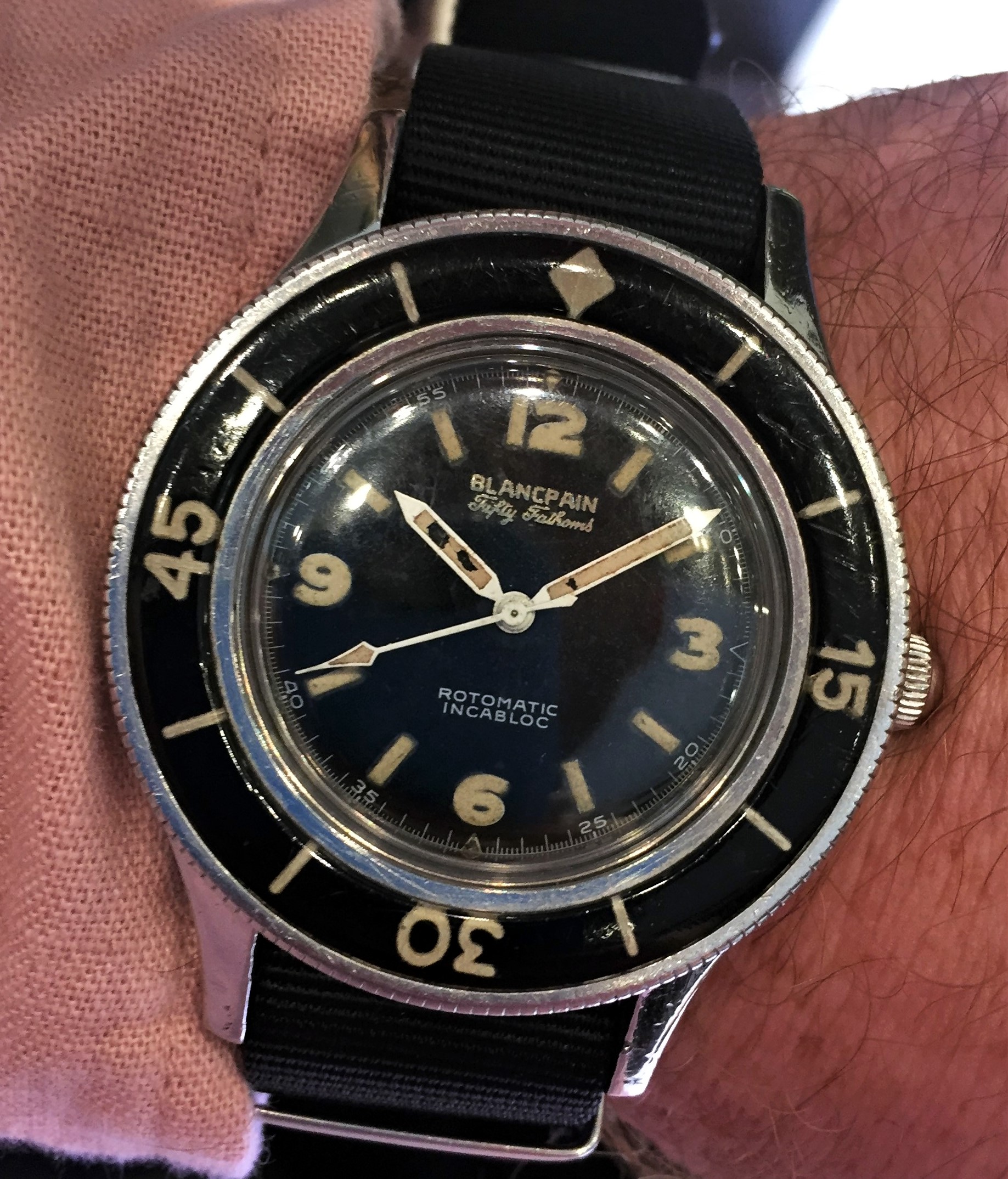
The original 1953 Fifty Fathoms
Such was the success of the Fifty Fathoms, it was formally adopted by Captain Robert Maloubier as a part of official combat gear of the French Navy frogmen.
With the growing success of the Fifty Fathoms as a tool watch, purpose-built for diving and underwater wear, the larger size of these timepieces (40mm and larger) made them less practical for everyday wear, especially in a time where the common size for a man’s watch was between 32 and 34mm. This problem was solved with the introduction of the Fifty Fathoms Bathyscaphe models. Introduced in 1956, three years after the original Fifty Fathoms, the Bathyscaphe is a smaller design however it incorporates many of the other characteristics of the Fifty Fathoms and remains a functional dive watch. The Bathyscaphe family, too, included additional branches with smaller 25 and 26mm models produced specifically for women.
Having become the first purpose built diving watch, arriving before the likes of the Rolex Submariner (1954) and Omega Seamaster 300 (1957), the success of the Fifty Fathoms was vast and so it became the go-to diving watch with a wide variety of models produced over the years of different sizes and designs across both the original and Bathyscaphe families. As the designs evolved, one notable feature was added by Blancpain to the original Fifty Fathoms: a humidity indicator situated at 6 o’clock on the dial. This indicator showed as blue if the air inside the case was dry, and if any water had penetrated the case and added moisture to the air, this would turn pink as a warning.
The Fifty Fathoms proved immensely popular with figures such as Jacques-Yves Cousteau, who wore a Fifty Fathoms when filming his award-winning documentary Le Monde du Silence in 1957, as well as being adopted by several other military forces; these military specification Fifty Fathoms even bore the hallmark “MILSPEC 1” on the dial to indicate this.
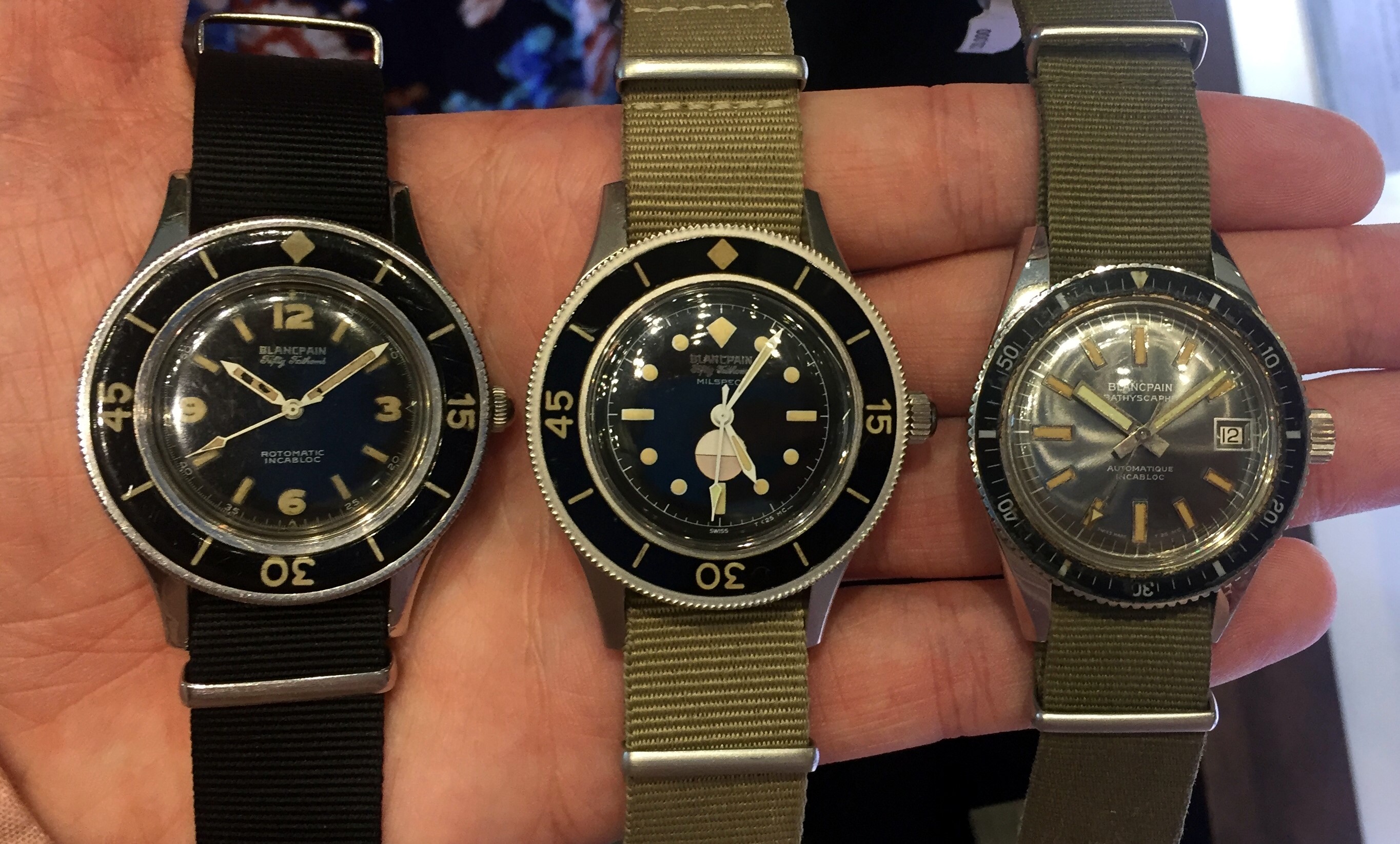
The original 1953 Fifty Fathoms (L), Fifty Fathoms Mil-Spec (C), and Fifty Fathoms Bathyscaphe (R)
One of the military forces that adopted the Fifty Fathoms was the American Navy. During the late 1950s, the Navy’s Experimental Diving Unit were undergoing a search for a diving watch to equip the unit which went on to become the infamous US Navy SEALs. The specifications were provided to American manufacturer Bulova, however in the meantime permission was given to test some other models. The official report of this testing, dated 15th July 1958 and completed by the US Navy Experimental Diving Unit, is actually available to read, in full, here.
Of three watches tested (Rolex Submariner, Enicar Ultrasonic and Blancpain Fifty Fathoms), the Fifty Fathoms was ultimately the preferred option. The conclusion from the report is shown below:
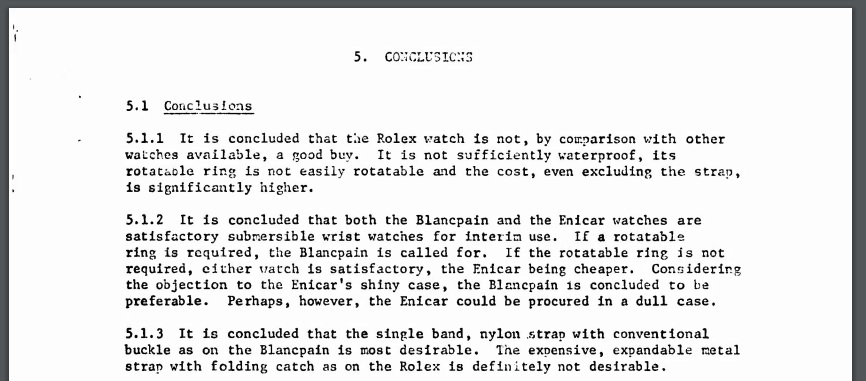
US Navy Experimental Diving Unit Testing Report
At the time, there was a strict ‘buy American’ policy in force. As a result, it was not possible for Blancpain – a Swiss manufacture – to provide the Fifty Fathoms directly to the US forces and so in the end, an American businessman named Allen Tornek persuaded Blancpain to allow him to source the Fifty Fathoms through his New York based company Tornek-Rayville (Rayville being a phonetic acronym of Villeret, Blancpain’s hometown) and rebranded it.
Whilst the jewels were supposed to have been replaced with American-made jewels, this may or may not have actually happened with Tornek reportedly noting the superior quality of the Swiss-made jewels, and throwing the American-made jewels away…
However, in the end this enabled the US Navy to get the watch they wanted, purchased from an American company, and in 1962 the first team of SEALs commissioned by President John F. Kennedy were wearing a Fifty Fathoms.
In total, there were approximately 1000 or so Tornek-Rayville branded Fifty Fathoms which were produced, however sadly the majority of these were destroyed upon decommissioning by the American Navy, and so they are exceedingly difficult to find and thus very collectible today – there are estimated to be around 30 in the hands of collectors.
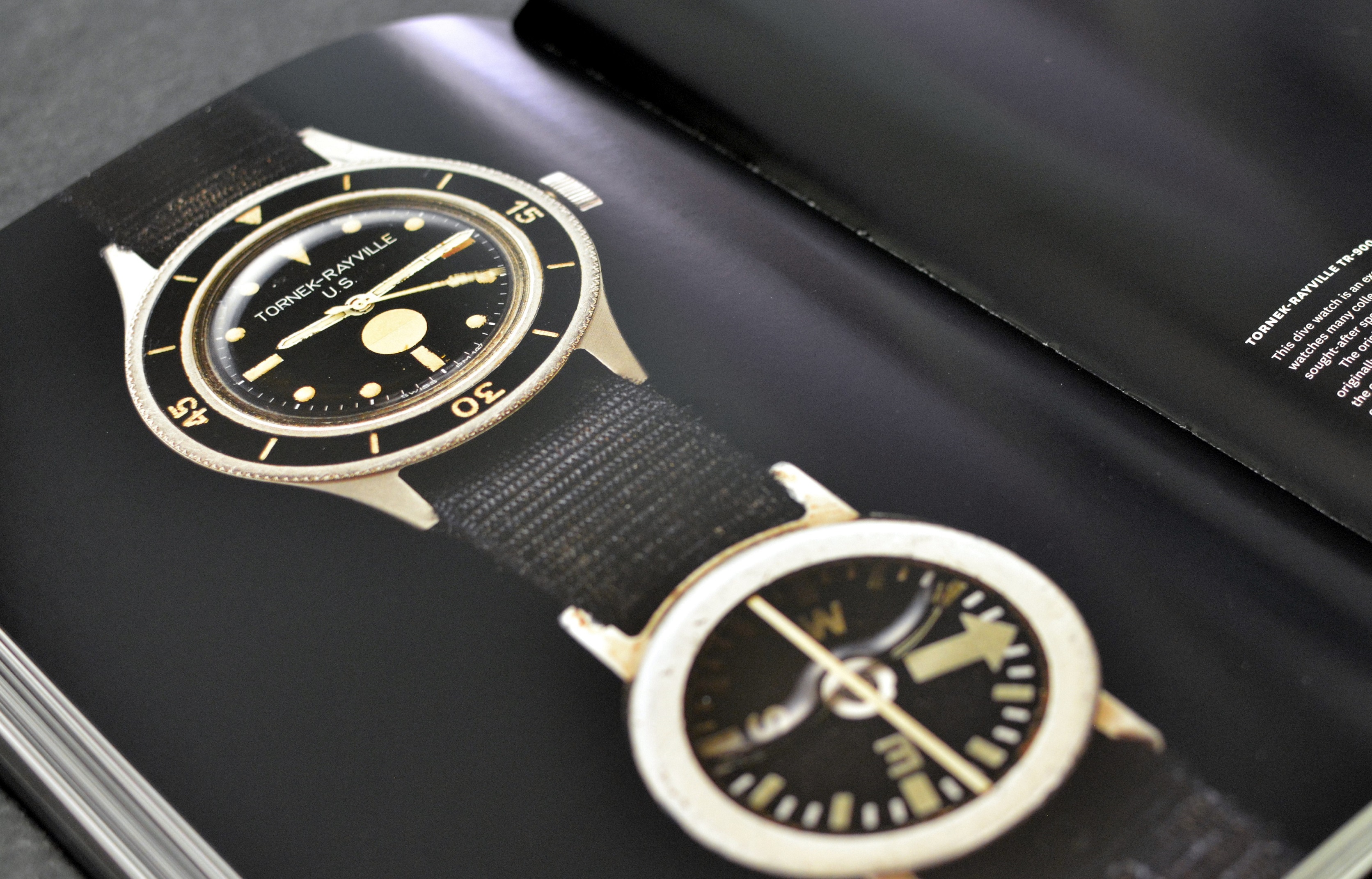
Tornek-Rayville Fifty Fathoms as featured in ‘A Man and His Watch’, by Matt Hranek
The reason that these were destroyed was owing to the inclusion of radioactive material such as Promethium-147 to aid luminosity in the dial and bezel markings. Such was the radioactive strength of these materials, the US Navy models had the caseback inscribed with “DANGER. IF FOUND RETURN TO NEAREST MILITARY FACILITY”.
It was obvious that the inclusion of dangerous materials such as this was far from suitable for a civilian clientele, and so Blancpain identified that they would need to be able to differentiate between Fifty Fathoms which do and do not contain such material. The solution to this was to swap the humidity indicator at 6 o’clock for another symbol – the internationally recognised symbol for radioactivity (three semi-triangles in a circular arrangement) struck through with a cross bearing the legend “NO RADIATIONS”. These first appeared from 1965, and again remain collectible today, as this was not universally adopted across all models of Fifty Fathoms.
The Quartz Crisis Era
With the arrival of the quartz crisis during the late 1970s, Blancpain as a manufacturer was not itself immune, with its small annual production rendered obsolete by the creation of cheaper, more accurate quartz timepieces. That is until a certain Jean-Claude Biver arrived and took over the brand with his friend Jacques Piguet for the sum of CHF 22,000.
Up until this point, not in its entire history since 1735 had Blancpain produced a quartz timepiece, and gambling on the exclusivity and luxury of mechanical timepieces, Biver declared:
“Since 1735 there has never been a Quartz Blancpain watch. And there never will be.”
Over the following decade, Biver revolutionised the brand of Blancpain, growing it into a hugely successful business. However, throughout this decade there was a focus on classical watchmaking, and there was no space for the Fifty Fathoms – or indeed any other sports watch – in the catalogue. Eventually, Biver sold Blancpain to the Swatch Group for CHF 60million.
The Fifty Fathoms Revival – 1997 onwards
After the sale of Blancpain to the Swatch Group, there was an appetite to explore the rich history of this brand which had existed since 1735. It is important to note that the catalogue of Blancpain watches available in 1997 was very much traditional, with the majority of timepieces between 34 and 38mm in size. Thus, the introduction of the 1997 trilogy collection (a Fifty Fathoms, a GMT and an Air Command flyback chronograph) representing land sea and air, all available in stainless steel with a 40mm case, marked a bold step for the manufacture.
However, so far as the Fifty Fathoms was concerned, this was a complete break from the characteristics and design cues of the original, with a completely different look as, unfortunately, following from the quartz crisis era and the lack of focus from Blancpain on the Fifty Fathoms and sports watches in general, the brand had somewhat lost touch with what it had created back in 1953.
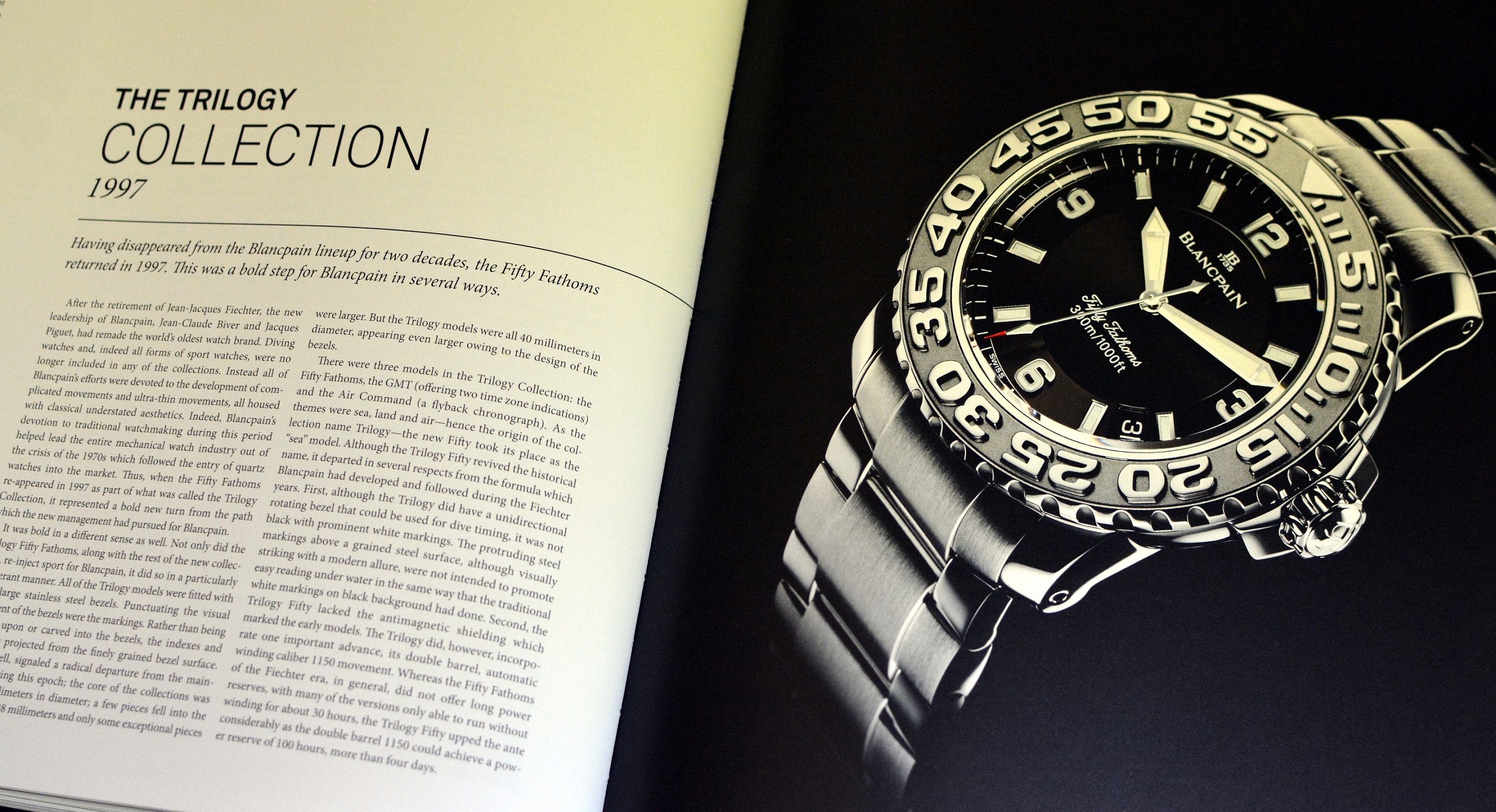
The 1997 Fifty Fathoms as featured in ‘Fifty Fathoms: The Dive and Watch History 1953-2013’
In 2002, Marc Hayek became CEO of Blancpain. Fortunately for the Fifty Fathoms, Hayek himself was a keen diver, and when some vintage Fifty Fathoms were discovered in a safe, these served to provide Hayek with all the inspiration he needed. As a diver, he immediately recognised the value of what had been designed in 1953, and immediately set about his first project as CEO: the reintroduction of the Fifty Fathoms, with the original Fifty Fathoms DNA, perfectly timed to mark the 50th anniversary of the original. These were exceedingly limited editions of three series of 50 pieces, which unsurprisingly today are highly sought-after collectors’ items.
The reintroduction of the Fifty Fathoms truly arrived in 2007, with the introduction of the Automatique model built upon a newly developed movement – the most advanced movement ever put in a diving watch – accompanied by a flyback chronograph and tourbillon.
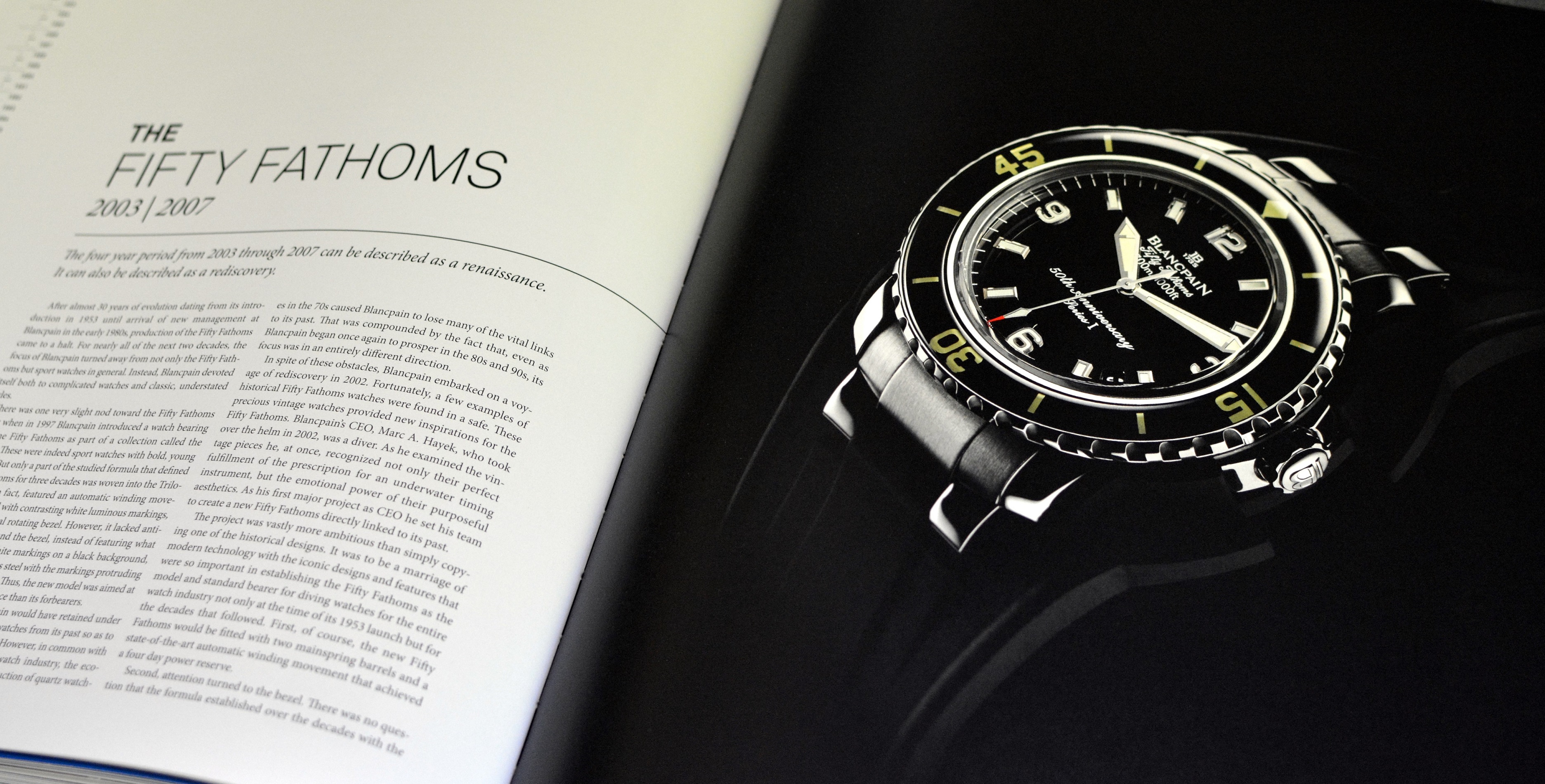
The 2003 50th Anniversary Fifty Fathoms as featured in ‘Fifty Fathoms: The Dive and Watch History 1953-2013’
The introduction of the 2007 Fifty Fathoms pieces saw the Fifty Fathoms as a collection with a variety of complications, unto itself, for the first time. And with it an immensely bright future. The Fifty Fathoms collections grew over the coming years, and further still as the trends of the industry moved towards larger sized timepieces. Blancpain also moved towards working with ambassadors such as marine scientists and underwater photographer Laurent Ballesta, and founding the Blancpain Ocean Commitment which has supported the World Ocean Summit in conjunction with The Economist, along with many other endeavours, to date having co-financed 18 major scientific expeditions.
Of course, Blancpain has continued to add to the Fifty Fathoms collection, without losing sight of the original design characteristics from 1953, and today it is perhaps the hallmark collection of the brand. Additionally, it has benefited hugely from technological improvements and advancements in materials available, making for an all-round improved product.
Perhaps the piece-de-resistance for the Blancpain Fifty Fathoms was the 2011 introduction of the Fifty Fathoms X Fathoms. Constructed from titanium and available only upon special request, this incredible achievement measures in 55.65mm in size and is 24mm thick. It features a mechanical depth gauge which displays the depth based on a measured pressure, a decompression valve, depth indication on two scales and even a maximum depth indicator. It even includes a five-minute retrograde display counter between 10 and 11 o’clock to assist with ascension after the dive.
The Fifty Fathoms X Fathoms has adorned the wrist of ambassador Laurent Ballesta on many expeditions.
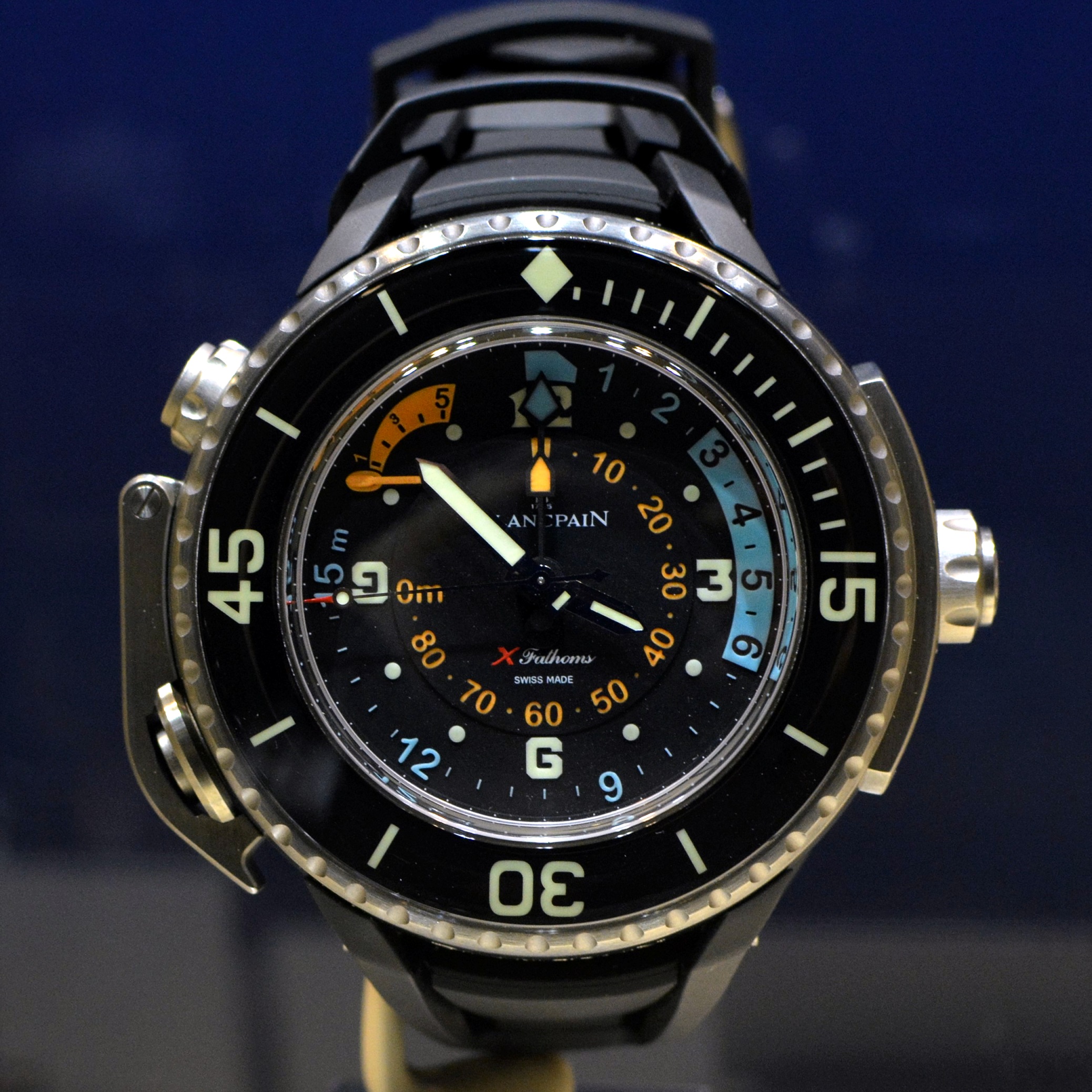
The Fifty Fathoms X Fathoms
More recently, in true keeping with the history of the Fifty Fathoms, the collection added to with the inclusion of the Fifty Fathoms Bathyscaphe in 2013. The reintroduction of the Bathyscaphe offered the same solution afforded by the originals in 1956, in so much as they are a 43mm smaller size than the 45mm tool watch Fifty Fathoms, an aesthetic better suited to everyday wear, and 38mm models designed specifically for women. They sit alongside today’s Fifty Fathoms just as they did in the 1950s, with both families scaled up to better suit the modern trend to a larger timepiece.
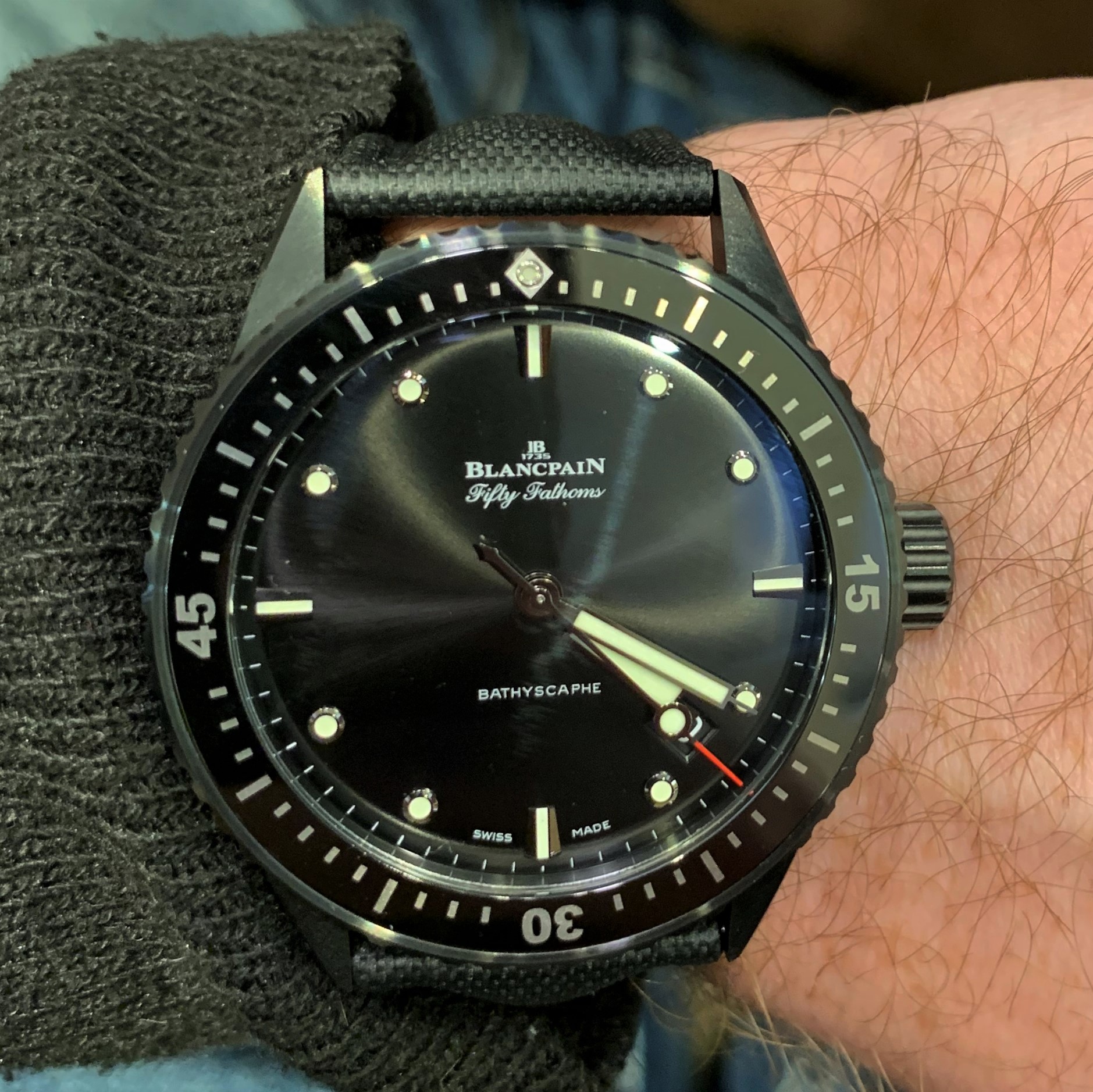
An example of a modern Fifty Fathoms Bathyscaphe
Finally, as with all classic collections, the Fifty Fathoms collection has seen the introduction of several limited-edition pieces to celebrate the heritage of the collection and pieces of bygone years. A favourite of these recent examples would have to be the 2019 novelty Fifty Fathoms Barakuda, which was inspired by a 1968 reference and takes its name from a German military equipment distributor.
This piece measures up at 40.3mm in diameter and an ultra slim profile, which makes it ideal for everyday wear. The tropic rubber strap is incredibly comfortable on the wrist, and unsurprisingly this limited edition was sold out incredibly quickly – serving to highlight the popularity of the Fifty Fathoms today and the universal appreciation of the history of this incredible collection.
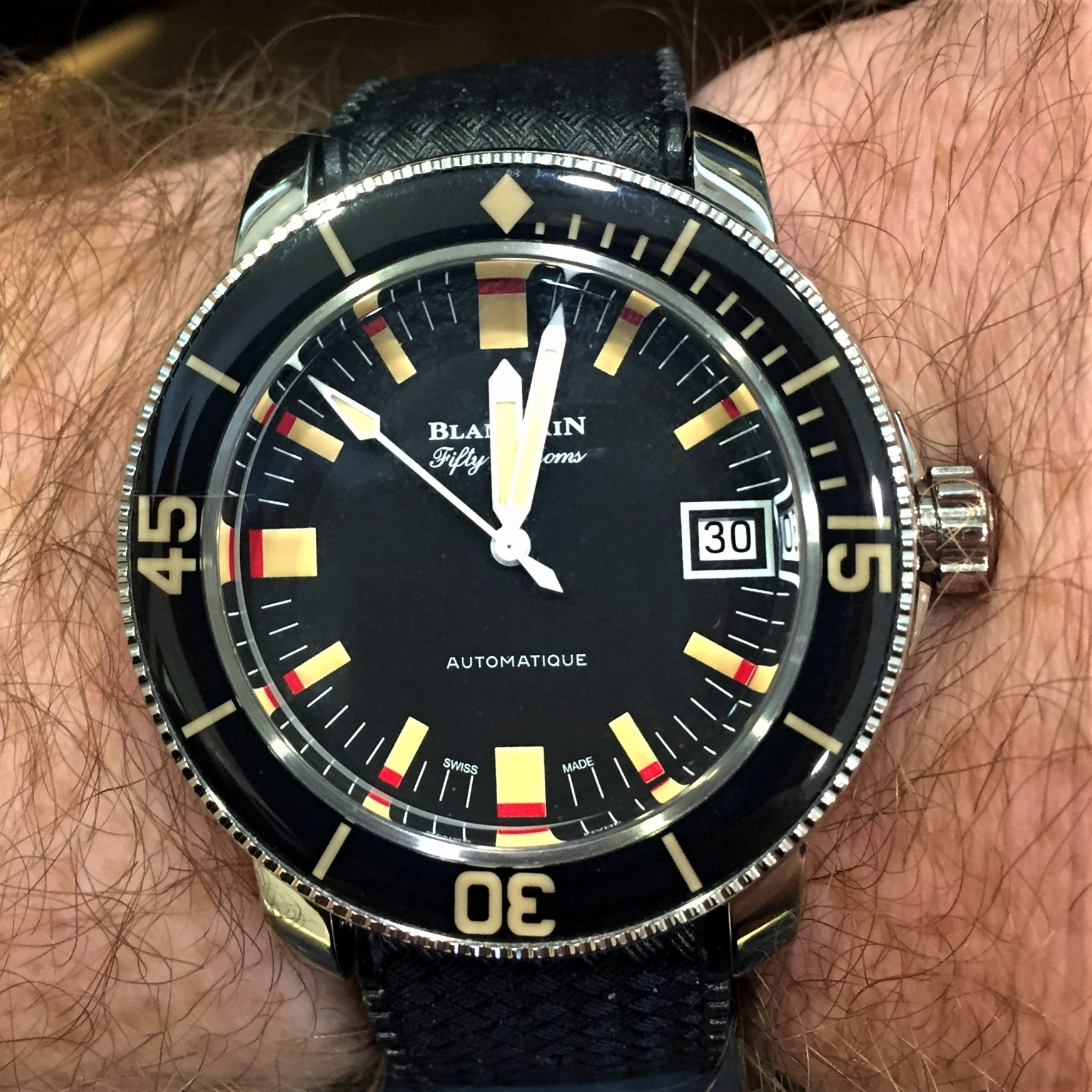
2019 Novelty Fifty Fathoms Barakuda
In Summary
The Fifty Fathoms is the archetypal diving watch, having come before some of the most celebrated names in the world of horology, and enjoyed a hugely successful period from its inception until the late 1970s. Whilst it disappeared for a while during the 80s and 90s, it has enjoyed a well-deserved revival since the turn of the millennium.
There are very few instances of dive watches which can simultaneously point to both a rich heritage of almost 70 years as well as a history of high-end watchmaking, and fewer still that succeed in combining the two so effortlessly (how many other fully functional dive watches feature a tourbillon?)
The Fifty Fathoms is a true icon and would certainly be worthy of its place in any collection.
Let us know what you think via our Contact page, or via our Instagram.
You might also be interested in:
- Spotlight: Blancpain Fifty Fathoms Bathyscaphe Desert Edition
- Water Resistance Ratings Explained
- Spotlight: Dive Watches
- Watch Stationery and Gift Ideas
- Watch Books, Watch Boxes and more at the Watch Affinity Shop on Amazon (commissions earned)
As an Amazon Associate, I earn from qualifying purchases – thank you for your support

